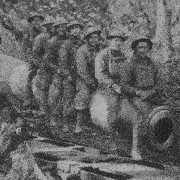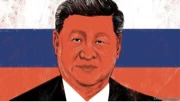|
What is the most powerful flying bug? This poll is closed. |
|||
|---|---|---|---|
| 🦋 |
|
15 | 3.71% |
| 🦇 |
|
115 | 28.47% |
| 🪰 |
|
12 | 2.97% |
| 🐦 |
|
67 | 16.58% |
| dragonfly |
|
94 | 23.27% |
| 🦟 |
|
14 | 3.47% |
| 🐝 |
|
87 | 21.53% |
| Total: | 404 votes | ||
|
January 6 Survivor posted:I mean back in the 1940s another political country started pushing those innovative yet much more affordable designs onto its troops, victory was right around the corner too Not a gun guy, have no idea what these are Political Country now just makes me think of Nazi Germany
|
|
|
|

|
| # ? May 26, 2024 09:18 |
|
Or the Reichskommissariat Ukraine e: "General Government" of Poland somehow even more ominous tbh
|
|
|
|
smug jeebus posted:Wtf is this art
|
|
|
|
Futanari Damacy posted:Not a gun guy, have no idea what these are I think these are some of the random cheap pieces of crap the Nazis were mass producing to save money right before they were defeated, so your intuition is correct
|
|
|
|
The RKG3 already exists.
|
|
|
|
Isentropy posted:As the resident Habsburg friend I'm gonna ask you directly: what's the best book about Maximilian I? Oof. My knowledge really starts at the Congress of Vienna and Metternich. I know quite a bit about linear warfare and artillery in the Seven Years War and Napoleonic Wars and a bit about the Wars of Succession through Christopher Duffy's work and Helion and Company, but that's all military history. My knowledge of social, economic and political history starts later. That there's a start point at the Congress makes sense of course, Napoleon forced Francis II to abdicate and that was the end of the Holy Roman Empire. The Napoleonic Wars, particularly the Tiroler Volksaufstand, was the transition and The Congress was the start of the new European order. Austria, and Austria-Hungary looked inward more, or in other strategic directions, as the North German states, Flanders and parts of Italy were lost. I'm digressing from my digression though. If I have an idea of what I'm looking for, I nearly always look at Brill first, then Routledge, then Oxford or Cambridge in descending order of specialization. If I'm new to a subject, I'd even start with Penguin before going to the Oxford and Cambridge Handbooks and Blackwell Companions. Those last three are very good academic overviews, though not always good narrative histories (for that, read a Penguin book first to get hooked). When you identify an author or subject there, Brill and Routledge usually have the monographs. I don't like reading papers if I can help it, but if one appears often in the notes of the above, JSTOR. I'm sure you know this already, I'm just putting out the process for anyone skimming the thread. I think this also explains the pattern of books I post in the thread, then begin quoting, finally feel more confident using ideas from and linking to other things. That's how it went with discovering Galicia and everything that flowed from there. Dreyland is obviously better qualified to give advice on the process than I am though. Starting with a handbook, Oxford has one: Germany and the Holy Roman Empire: Volume I: Maximilian I to the Peace of Westphalia, 1493-1648, and there's a chapter in one of Oxford's wonderful Very Short Introductions, The early modern empire: from Maximilian I to the Thirty Years War in The Holy Roman Empire: A Very Short Introduction. The best reviewed book I can see in the journals is Maximilian I. von Bayern 1573–1651 by Dieter Albrecht. Interestingly, here's the initial impression about it in the Journal of German History: "The Thirty Years War was a period of towering political personalities in Europe. One of the most mysterious and least-known of them, Maximilian I of Bavaria, has now joined Gustavus Adolphus, Richelieu, Olivares, Wallenstein and even Frederick Henry of Orange-Nassau in having been given not only a plethora of monographs about aspects of his policies but a mammoth biography. Dieter Albrecht's biography has 1120 pages of text, plus an index of persons, in which, characteristically, Frederick Henry does not appear, presumably because Albrecht, like many historians of the Thirty Years War seriously under-estimates the role of the Netherlands. For literary qualities and readability, Albrecht's does not compare with the great books of Michael Roberts, Golo Mann or John Elliott. But in mastery of the archival and the secondary sources, and in the clarity of his presentation in an otherwise flat style, the doyen of German studies of the Thirty Years War has fulfilled most scholarly expectations." First of all, lol. Roberts' books are good but dense, Golo Mann is probably better known for his involvement in how German scholarship came to terms with Hitler and the Holocaust so it's an interesting inclusion (I'm not familiar with his writing on the early modern period), John Elliott died just this past year, and was apparently a very good writer on subjects I personally find a bit dull so ymmv. I'll defer to Dreyland again here, but complaining about the literary qualities and prose of German historians in translation, especially German historians of the old school writing 1100 page books is very funny to me. People have been falling all over themselves for Rudiger Safranski's recent doorstoppers even if some of the journals have the same complaints. German historians write giant loving biographies and the style of German history writing, particularly in translation, is not rip roaring fun, would be my summation though again @ Dreyland.
|
|
|
|
I read all of your post but really I should've said I meant the other Maximilian I Like I've always wondered how he became so "liberal" for his time
|
|
|
|
cool that there’s no less than three of that dumb totenkopf morale patch in this picture and two of them are on the same guy, lol
|
|
|
|
Also, noted good guy superhero, The Punisher
|
|
|
|
https://twitter.com/OranjeSwaeltjie/status/1611278083205771265 the Homer begging Mao to come back picture but its Robert Mugabe
|
|
|
|
https://twitter.com/_aboveaverage69/status/1612168520296501249?cxt=HHwWgsC4pciuyd8sAAAA
|
|
|
|
Fated To Be Fat posted:Separate 1944 peace deal with the soviets included a clause that meant Finnish armed forces would have to push the Germans out of Finnish Lapland. Finnish armed forces of course stalled because of the whole former "co-belligerent" status and then Stalin threatened that he would use soviet forces to finish the fight. It led to the short Lapland war in which nazis used a bit of scorched earth when they retreated. it is pretty funny finland technically got the chance to fight against the nazis, and thus recoup a miniscule amount of historical honour. fighting the nazis (or rather, just letting them burn everything and dejectedly following behind) as they retreated is brought up every single time the continuation wart is brought up
|
|
|
|
https://twitter.com/CanadianKitty1/status/1612482245008449536 https://ria.ru/20230109/kamnev-1843753757.html
|
|
|
|
smug jeebus posted:Wtf is this Megamissen posted:fisheyelensphotoofcirnofumosittingonat72.png
|
|
|
|
smug jeebus posted:Wtf is this cirnu
|
|
|
|
i showed you my anime body pillow please respond
|
|
|
|
https://dzen-ru.translate.goog/a/Y5rOghZEL3s1C5lV?_x_tr_sl=auto&_x_tr_tl=en&_x_tr_hl=en&_x_tr_pto=wapp Remember Russia's single remaining aircraft carrier that's been sitting on cinderblocks in drydock for a decade because their single remaining ex-soviet floating dock that's big enough, sank because the doors got stuck open and also one of the cranes fell over onto the flight deck? Well the new bigger floating dock arrived from China today, so they're getting it back into action soon! *EDIT: hopefully the production line for the navalized Sukhois is still around and hasn't been sold for parts since they stopped making them 15 years ago!
|
|
|
|
AnimeIsTrash posted:https://twitter.com/_aboveaverage69/status/1612168520296501249?cxt=HHwWgsC4pciuyd8sAAAA
|
|
|
|
smug jeebus posted:Wtf is this Anime bullshit no doubt.
|
|
|
|
The Late Soviet fleet was sincerely, genuinely, impressive it’s just that maintaining let alone refitting or building ships costs money Russia didn’t have in the 90’s. There are some out of print books for military professionals in the 80’s, The Naval Institute Guide to the Soviet Navy and Soviet Naval Tactics, that are very clear, “if these guys ever escape into the open ocean, oh gently caress.” The ships and tactics were not just sound, but impressive. They were never trying to be the Royal Navy or USN, but their surface fleet was designed to absolutely gently caress up carrier groups, then convoys, and I don’t doubt for a minute they’d have done it. One thing to keep in mind though just like the Fulda Gap, the expectation was that the war either ends in the first week or the world does. Soviet ships and tactics were designed with that in mind, not projecting force around the world, particularly long cruises, operating totally beyond Soviet air forces, or an independent mission other than supporting the invasion of Norway and the breakout from the GIUK Gap. Some interesting USNI titles still in print: Incidents at Sea: American Confrontation and Cooperation with Russia and China, 1945-2016 Drawing on extensive State Department files, declassified Navy policy papers, interviews with both former top officials and individuals who were involved in incidents, David F. Winkler examines the evolution of the U.S.-Soviet naval relationship during the Cold War, focusing in particular on the 1972 Incidents at Sea Agreement (INCSEA). In this volume, an updated edition of his classic Cold War at Sea, Winkler brings the story up to the present, detailing occasional U.S.-Russia naval force interactions, including the April 2016 Russian aircraft “buzzings” of the USS Donald Cook in the Baltic. He also details China’s efforts to militarize the South China Sea, claim sovereignty over waters within their exclusive economic zone, and the U.S. Navy’s continuing efforts to counter these challenges to freedom of navigation. Strike from the Sea: The Development and Deployment of Strategic Cruise Missiles since 1934 The cruise missile—also referred to as a guided missile—is a widely employed tactical and strategic weapon, capable of striking ground or ship targets with conventional or nuclear warheads. Before the development of ballistic missiles for attacking an enemy’s territory, the U.S. and Soviet strategic arsenals had land-attack cruise missiles to deliver nuclear warheads. Subsequently, the U.S. and Soviet Navies, as well as other fleets, developed tactical anti-ship and anti-submarine cruise missiles. Strike from the Sea addresses the U.S. Navy’s Regulus missile program—the world’s first submarine weapon for attacking an enemy homeland with a nuclear warhead—and the similar Soviet Navy’s cruise missile efforts. Prior to Regulus a few of the world’s submarines had deck guns that were employed for assaulting coastal targets; indeed, the British built a class of “submarine monitors” with large-caliber guns for attacking coastal targets. The U.S. Navy’s rapid and successful development of the Polaris Submarine-Launched Ballistic Missile (SLBM) and budgetary constraints caused the cancellation of advanced submarine-launched cruise missiles—the Regulus II as well as the follow-on Rigel and Triton. Submarines armed with the Regulus I missile continued on patrols in the North Pacific until mid-1964, when they were replaced on the “deterrent” role by Polaris missile submarines. The Soviet Navy continued the development and deployment of anti-ship cruise missiles, which retained some land-attack capabilities. 21st Century Gorshkov: The Challenge of Seapower in the Modern Era Admiral of the Fleet of the Soviet Union Sergei Georgiyevich Gorshkov led the Soviet Navy for almost three decades during the height of the Cold War. He was the architect of the Red Fleet, turning it from little more than a coastal defense force into the most powerful navy that the Soviet Union ever possessed. 21st Century Gorshkov is a collection of articles, many of which have not previously been published in English, and passages from Admiral Gorshkov’s more famous books, each with an introduction linking the work to the challenges facing navies everywhere today. Strategists worldwide have much to learn from the Soviet legend behind the most rapid naval expansion program in peacetime history. Gorshkov’s ideas on naval power remain relevant today. Warships of the Soviet Fleets 1939-1945 Volume 1: Major Combatants Seventy-five years after the end of the World War II the details of Soviet ships, their activities and fates remain an enigma to the West. In wartime such information was classified and after a brief period of glasnost (‘openness’) the Russian state has again restricted access to historical archives. Therefore, the value – and originality – of this book is difficult to exaggerate. It sees the first publication of reliable data on both the seagoing fleets and riverine flotillas of the Soviet Navy, listing over 6,200 vessels from battleships to river gunboats, and mercantile conversions as well as purpose-built warships. Divided into three volumes, this first covers major surface warships down to MTBs and armored gunboats, as well as submarines. For every class there is a design history analyzing strategic, tactical, and technical considerations, and individual ship detail includes construction yard, key building dates, commissioning, fleet designations, relocations, and fate. Once a closely guarded secret, the wartime loss of every ship and boat (over one thousand) is described. Furthermore, the confusion caused by frequent name changes is clarified by an index that runs to sixteen thousand items. By following the ships through both their wartime and earlier history, the book reveals many aspects of Russian history that remain highly -sensitive: clandestine co-operation with Weimar Germany and fascist Italy, the NKVD-enforced closure of Soviet borders, the ‘Gulag Fleet’, the faked Metallist sinking that excused the military occupation of Estonia, and the ill-conceived pact with Nazi Germany. Restrictions recently imposed on historical publications in Russia mean this book could certainly not have been published there – as proven by the fact that most of the authors' Russian collaborators preferred not to disclose their identities. This is undoubtedly one of the most important naval reference works of recent years and will be welcomed by anyone with an interest in warships, the Soviet Navy, or maritime aspects of World War II. Also, and let me preempt mlnp, I’ll scour my office for the specific book on weapon procurement that covers this, the Soviets’ chances were greatly aided by the USN’s strategy for the 80’s being, by all accounts, insane and suicidal - because of office politics. In the New Cold War under Reagan, the USN needed a strategic, nuclear, mission to maintain funding for the surface fleet. At the same time, the Soviets had a new generation of subs and SRBMs that could strike the CONUS from Soviet home waters, or near-home waters in protected bastions, within the range of Soviet air cover and this fit perfectly with the short legs of the Soviet surface fleet. The USN wanted new carriers and cruisers, basically because those were important to career progression. How did they solve all of these problems? The “solution” was to propose US carrier groups charging headlong into Soviet waters, taking on the entire Soviet fleet, Soviet Naval Aviation, the countless Soviet air force aircraft they were charging into range of, plus coastal anti ship missiles - sinking Soviet SSBNs in the bastions, and then delivering strategic strikes on Arkhangelsk, Murmansk and Leningrad. This was unworkable for more reasons than I can list, but the simplest is that each Soviet airbase could handle many, many, more aircraft than the largest US carrier, and that there were far more airbases than carriers. Also, short range interceptors would make short work of A-6 Intruders and A-7 Corsairs, and there would be more of them, SAMs you get the idea. Anyways, this “plan” was still enough to secure the budget, so mission accomplished. The top of the USN seems to have understood this, mid-grade officers maybe not so much so when they wargamed it out or went on exercise they developed some wacky poo poo with Tomcats to make it “work”: Discussion of F-14s in Armageddon posted:Except for Crazy Bob’s CVW-11, the F-14 Tomcat never trained to use the 6-Phoenix operationally. Most photos of the 6-Phoenix loadout that you find on the interweb were taken of aircraft flying from land bases or during the first fleet qualification trials back in 1972. Slamming a fully loaded 50,000lb & 140kt monster into the deck of a carrier was found to be unpractical since fuel levels had to be dangerously low for it to be safe. In fact, even the 4-Phoenix loadout on the F-14 was considered draggy by the pilots and was rarely used. Yes, the USN officer who actually believed it was possible was called Crazy Bob.
|
|
|
|
Comrade Koba posted:cool that there’s no less than three of that dumb totenkopf morale patch in this picture and two of them are on the same guy, lol *Totenkopf morale patch bearing the insignia of Hitler's personal bodyguards and celebrating the Holocaust, supplied by R3ich.ua / silly subculture emblem worn ironically to scare the Russians
|
|
|
|
SplitSoul posted:*Totenkopf morale patch bearing the insignia of Hitler's personal bodyguards and celebrating the Holocaust, supplied by R3ich.ua / silly subculture emblem worn ironically to scare the Russians there’s this weird but consistent modern liberal tendency to have a sort of negative international solidarity: right wingers in the liberal’s own country are, of course, fascists. but right wingers in other countries, even the ones doing literal hitler salutes, are imagined to be friends of liberal values. We must depose Evo Morales to defend the environment and indigenous rights. Lula is a threat to the rule of law in Brazil. In Ukraine, these guys with various SS patches are defending gay and trans rights from Russian assault. It’s the case outside the United States as well - Hong Kong protestors supporting Trump, Ted Cruz, and various American alt rights figures, and British liberals aligning with the international evangelical movement to “defend womanhood.” obviously this all makes material, economic logic. But liberals don’t like to put it that way. instead, international support for far right forces is invariably couched in some sort of high minded liberal value Best Friends has issued a correction as of 18:27 on Jan 9, 2023 |
|
|
|
Best Friends posted:there’s this weird but consistent modern liberal tendency to have a sort of negative international solidarity: right wingers in the liberal’s own country are, of course, fascists. but right wingers in other countries, even the ones doing literal hitler salutes, are imagined to be friends of liberal values. liberals do not thinks domestic right wingers are fascists
|
|
|
|
I'm reading an interesting book I got for Christmas, some ye olde history book about the Soviet Union wrote in the 70s. The first chapter is mostly about the revolts leading up to the revolution, going just short of a 100 years back. What's interesting about it is the framing. On one side, you had the Occidentalists and, on the other, the Slavophiles. The first see traditional slavic caracteristics like religion, folk culture, tradtitional order and autocracy as chains binding the Empire's true potential. The latter sees it as a bulwark against moral corruption and a source of rejuvenation to steer the empire away from stagnation. So yeah, glad to see the ideologies did not change that much in 200 years. The USSR looks like a parenthesis in restrospect.
|
|
|
|
Lostconfused posted:“I’ve been uber impressed at how the country has been able to keep the system running,” Denys Sakva, energy analyst at Kyiv-based Dragon Capital, an investment management company, said. uh huh
|
|
|
Futanari Damacy posted:Not a gun guy, have no idea what these are Cookie Cutter posted:I think these are some of the random cheap pieces of crap the Nazis were mass producing to save money right before they were defeated, so your intuition is correct Fun fact about the volkssturm guns, the German MIC didn't want anything to do with them because they thought that sticking a poo gun in the hands of random civilians was a waste of resources that could be otherwise used to arm actual troops with actual guns. So the party created what was effectively a parallel procurement system where the guns were centrally designed, then the plans sent out to local cottage workshops that were otherwise too small/not technically proficient enough to participate in the normal production stream. They were designed to be produced with as little machinery as possible, iirc barrels would be sent out by the crate to your local toaster factory or whatever and they would do the rest. The big idea was you would use your lovely carbine + indomitable will to kill Russians and take their actual real guns. The parallels to the rocket armed technicals and stuff are startling, especially when you consider that none of this achieved anything at all besides getting a bunch of civilians killed for the vibes.
|
|
|
|
|
gradenko_2000 posted:https://twitter.com/OranjeSwaeltjie/status/1611278083205771265 https://twitter.com/OranjeSwaeltjie/status/1612038075177369600 lol
|
|
|
|
any good reading on the volksturm?
|
|
|
|
euphronius posted:liberals do not thinks domestic right wingers are fascists They look at it like cops, a few bad eggs that can be shamed, cowed, or rehabilitated into god loving american republicans.
|
|
|
|
Best Friends posted:there’s this weird but consistent modern liberal tendency to have a sort of negative international solidarity: right wingers in the liberal’s own country are, of course, fascists. but right wingers in other countries, even the ones doing literal hitler salutes, are imagined to be friends of liberal values. Right now the AOC-adjacent seem to be strongly in support of Lula and against the riots but I'm sure it's a matter of time till they get new marching orders from corporate.
|
|
|
|
Uk is thinking about sending 10 challenger 2 tanks, which sounds like a lot more trouble than its worth
|
|
|
|
Just caught an American ABC newscast and they were likening the Brazilian riots to the capitol riots.
|
|
|
|
https://twitter.com/CondoleezzaRice/status/1612510272245354497?s=20
|
|
|
|
Tankbuster posted:any good reading on the volksturm? this thread, march-april of last year 
|
|
|
|
It's another one of those damning with praise pieces, pretty sure the Russians and Ukrainians commentators already took their shot at it since it's a few days old. I guess she is just trying to drum up more engagement and clicks. quote:Vladimir Putin remains fully committed to bringing all of Ukraine back under Russian control or — failing that — destroying it as a viable country. He believes it is his historical destiny — his messianic mission — to reestablish the Russian Empire and, as Zbigniew Brzezinski observed years ago, there can be no Russian Empire without Ukraine.
|
|
|
|
there’s a defense conference in sweden going on at the moment. today the chief researcher of the national defense research institute got up on stage and straight up decreed that peaceful coexistence with russia is and will always be impossible no matter the circumstances. extremely normal country
|
|
|
|
Каргач 🇷🇺⚡️Ꙃ posted:
|
|
|
|
Soledar getting more and more attention because I guess Bakhmut/Artemovsk is still slow going so might as well get hyped over something else https://twitter.com/rybar_en/status/1612488016219541504
|
|
|
Lostconfused posted:Increasingly, members of Congress and others in our public discourse ask, “Why should we care? This is not our fight.” But the United States has learned the hard way — in 1914, 1941 and 2001 — that unprovoked aggression and attacks on the rule of law and the international order cannot be ignored. Eventually, our security was threatened and we were pulled into conflict. Lmao
|
|
|
|
|

|
| # ? May 26, 2024 09:18 |
|
Lostconfused posted:Soledar getting more and more attention because I guess Bakhmut/Artemovsk is still slow going so might as well get hyped over something else I think the reason people are getting "excited" about Russian advances in Soledar is because 1) it happened very quickly compared to what else is going on in the area and 2) if they can drive the Ukrainians out of that town and have similar success on the south side of Bakhmut (the Russians are also said to be moving up towards Klishchiivka in the direction of Ivanivske) it would put the Ukrainian positions in Bakhmut under threat of encirclement and those positions may become untenable for Ukraine to maintain at that point. According to some simply capturing Soledar may have this impact without even needing to make much progress on the other side of the city. The Ukrainian twitter observers have been calling for an emergency counter-offensive to try and relieve what looks like a really bad situation for their forces in the area so there may be some big movements to come in the next few days. Starsfan has issued a correction as of 19:57 on Jan 9, 2023 |
|
|







































